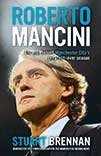WSC advent calendar day seven
This image is of the Feijenoord Stadion, more commonly called De Kuip (The Tub), home to Feyenoord of the Eredivisie. It has a capacity of 51,177 and was opened in 1937.
This image is of the Feijenoord Stadion, more commonly called De Kuip (The Tub), home to Feyenoord of the Eredivisie. It has a capacity of 51,177 and was opened in 1937.
{youtube}Kur5sS3EWQs{/youtube}
Day six of the WSC advent calendar and we’ve got snowballs for you. When Division Three’s Sheffield Wednesday hosted top-tier Arsenal in the FA Cup in 1979, the pitch was cleared of snow but the open Kop wasn’t. It gave Owls fans plenty of ammunition to hurl at Arsenal keeper Pat Jennings as the second half began – not behaviour we condone, obviously. The game was drawn 1-1, the reply at Highbury 2-2, the second and third replays at Filbert Street 2-2 and 3-3 before Arsenal finally won 2-0 in the fourth replay.
Skip to 5m20s for snowballs
{youtube}YK0HkGEPmxI{/youtube}
 The man behind Manchester City’s
greatest ever season
The man behind Manchester City’s
greatest ever season
by Stuart Brennan
Andre Deutsch, £16.99
Reviewed by Matthew Barker
From WSC 310 December 2012
Roberto Mancini was a gloriously gifted player. He was also stroppy; prone to outbursts and sulks that frequently alienated him from coaches of club and country and, occasionally, some of his team-mates. Now, as a manager himself, he has to deal with players who can comfortably outdo him on the ego and attitude fronts.
The first 100 pages or so of Stuart Brennan’s book are dedicated to Mancini the footballer, particularly his time at Sampdoria. Mancini’s contention that he was actually a midfield playmaker, rather than an out-and-out striker, caused him problems throughout his playing career. His great vision and unfailing talent for placing the ball where he wanted won him endless plaudits, but fallings out with a succession of Azzurri coaches and a surfeit of Italian attacking talent put the blockers on his international career.
Bar a few stand-out howlers – claiming the Calciopoli scandals took place “six years after” Italia 90, for one – the main problem here is the author’s drawn-out, clumsy theory that Mancini has always sided with the underdog, and that his notorious stubbornness is actually the stuff of an anti-establishment rebel (this despite him being a boyhood Juventus fan).
We are told that his move to Sampdoria in 1982, after a debut season with Bologna, “appealed to his sense of destiny” and that the Genovese club – a “provincial footballing backwater” apparently – provided the perfect platform for someone keen to topple the established Serie A order. And yes, it’s pretty obvious where we’re going with this one.
Less time is spent looking at Mancini’s time in Italy as a coach, which is a pity. The traumas of a first job in charge of Fiorentina, when the club were edging towards bankruptcy and demotion to the old Serie C, are dealt with in a few paragraphs, as is his equally troubled stint at Lazio. Brennan is itching to get to the bit where Mancini takes charge at Inter, so he can triumphantly point out that Nerazzurri are sort of, a bit, kind of like Manchester City. And Milan just like Manchester United. Perfect. Except, of course, they’re not.
The claim that il Mancio was sacked by an “ungrateful” and “impatient” Inter after three post-Calciopoli championship wins is hugely misleading. Most Italian commentators (and did Brennan really not think to speak to one?) believe the coach engineered his move away from the club and that his bluff was called after he reportedly told players he was going to Chelsea following Inter’s 2008 Champions League exit against Liverpool.
Instead of the promised insight and examination, we get a decidedly uncritical portrait; there is little analysis of the handling of Carlos Tévez. The relentless blandness of Mancini’s press conference quotes are interspersed with uninspiring, cut-and-paste retellings of events from the past couple of years, stuff that anyone with a passing interest in British football, never mind Manchester City supporters, surely knows well enough already.
We’re told those City fans are “in delirium”, some lucky ones are even “in ecstasy”, and surely no one can begrudge them that? Brennan sees his subject’s habitual grumpy aloofness as a positive, proof that he’s willing to fight his corner. However, a more searching assessment of Mancini, both as a man and a manager, could have flagged up warning signs of potential troubles ahead.
 by Michael Blackburn
by Michael Blackburn
Grosvenor House, £7.99
Reviewed by Tom Greene
From WSC 310 December 2012
I was 100 pages into reading Agents, Rovers and Cricket Loving Owners when Steve Kean resigned from Blackburn Rovers. The author, Michael Blackburn, pours so much of his heart and soul into describing the pain both Kean and Venky’s have caused the club’s support that my first thought on hearing the news was for him. His book is a history of Venky’s takeover from the perspective of an exasperated fan living through it.
The story is certainly there to be told – Rovers have gone from one of the best run clubs in the League, operating successfully on very little external funding in one of the poorest parts of the UK, to an utter shambles. The catalogue of mismanagement, PR embarrassments and total lack of direction described in the book continues to this day. At the time of writing, despite Kean’s resignation almost a month ago, there is still no new manager in place. When Venky’s took over Kean was Sam Allardyce’s first-team coach. Currently in charge is Kean’s assistant, Eric Black: anyone is in with a chance of the manager’s job at Ewood Park.
The book is a chronological story from the day the Venky’s took over in November 2010 to eventual relegation last May. The structure is both a strength and weakness. On the positive side, no detail of the fans’ experience has gone undocumented and almost every game of Kean’s reign is described in painstaking detail. However, his poor team selection, delusional post-match analysis and never-ending optimism about his own and the team’s position is not enough to engage the reader throughout.
My favourite sections of the book are where we get pure unadulterated Kean. Although the author is scornful of Kean’s playing and managerial experience, this was not what made him a disastrous manager. His Comical Ali-style post-match debriefs are catalogued with some verve, although I was disappointed that a personal favourite – where Kean blamed a David Dunn shot hitting the post on a lack of dew on the grass – was not included in the author’s top ten. However, because we do not hear from Venky’s or their ex-manager directly (no doubt not for want of trying by the author) we are left with the same longing for the true story as Rovers fans will have felt living through it.
This book will not shed any new light on the Venky’s debacle for anybody who has followed the era closely. However, you could not get a more comprehensive account of what it has felt like to be a Rovers fan over the last two years. For those fans of Premier League teams not content with mid- to lower-table obscurity, read this book and it will show you that things could be worse. A lot worse.